DONALD HARRISON / “Donald Harrison Jr. Mixtape”
You have to go through the tradition and learn as much as possible and you really never learn it all, so it's a lifelong process of learning the tradition. But you also should -- for me -- think forward: how can we improve the look of what we're doing? How can we improve the music? How can we improve the music? How can we tweak it? To say this is how we did it in this era. And you know, how can we do it in a way that makes young people want to become involved and realize that they have something here, keep it alive. How can we use it in other areas? How can we use this to educate? How can we use this to show that you're my brother and I like what you're doing with the bagpipes over there, but this is what I'm doing with this. But we're still brothers. —Donald Harrison Jr.There has been only one alto saxophonist to dominate jazz and that, of course, is Charlie Parker. Don’t get me wrong there have been a number of great alto saxophonists: Ornette Coleman and Cannonball Adderley come immediately to mind. Nevertheless, as important as they are (especially so in Ornette’s case), both of them had the ill-fortune to come along during the Trane ride. Even though John Coltrane left us long time ago, his reign continues as the dominant voice on saxophone when it comes to influencing the sound of the saxophone and indeed influencing the direction of the music as a whole. During the forties and the fifties, it was all about Bird. From the sixties on, Trane has been the man.
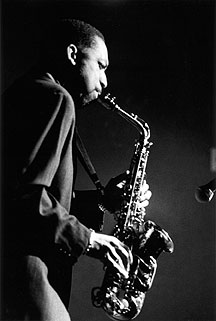 All that said: Donald Harrison Jr. is a hell of a player and his recent choice to emphasize playing in a sax, bass, drum trio format really, really works for him. For one thing the format emphasizes Donald’s griot approach to the alto. He doesn’t play with a lot of flash and fireworks, even though he is quite a technician. Donald’s forte is telling a story. He builds an improvisation, stacking one phrase atop another and stringing them all together to make a cohesive statement.
When listening to Donald Harrison, a lot of times you find yourself saying “yeah” aloud or to yourself. You agree with him rather than marvel at him, and as such, his playing is like a warm, friendly embrace rather than a cold, ego driven “look at me” distant form of entertainment or supposed enlightenment.
Another aspect about Harrison is that he swings both ways: he plays with those younger than he is in a style consistent with the taste of those brought up on hip hop but he also plays with those older than he is who are products of an earlier era and thusly have a completely different approach to jazz.
I find it fascinating that Donald is so adept at working in both milieu. Listen to the kick-off track—by the way, “So What” is the only quartet among the nine tracks. That’s Genn Patscha on piano. Glenn is from Canada but is a seasoned veteran of the New Orleans jazz scene. Vincente Archer is on bass and John Lamkin is on drums rounding out the rhythm section.
This version of Miles’ classic has a healthy backbeat and sounds like something you would hear on a Sunday urban radio smooth jazz show except it’s not really smooth, but it’s not straight ahead swinging either, and that’s the sweet spot: to play a song that’s fifty years old and maintain the integrity of the original while making the song sound like it could have been written yesterday.
All that said: Donald Harrison Jr. is a hell of a player and his recent choice to emphasize playing in a sax, bass, drum trio format really, really works for him. For one thing the format emphasizes Donald’s griot approach to the alto. He doesn’t play with a lot of flash and fireworks, even though he is quite a technician. Donald’s forte is telling a story. He builds an improvisation, stacking one phrase atop another and stringing them all together to make a cohesive statement.
When listening to Donald Harrison, a lot of times you find yourself saying “yeah” aloud or to yourself. You agree with him rather than marvel at him, and as such, his playing is like a warm, friendly embrace rather than a cold, ego driven “look at me” distant form of entertainment or supposed enlightenment.
Another aspect about Harrison is that he swings both ways: he plays with those younger than he is in a style consistent with the taste of those brought up on hip hop but he also plays with those older than he is who are products of an earlier era and thusly have a completely different approach to jazz.
I find it fascinating that Donald is so adept at working in both milieu. Listen to the kick-off track—by the way, “So What” is the only quartet among the nine tracks. That’s Genn Patscha on piano. Glenn is from Canada but is a seasoned veteran of the New Orleans jazz scene. Vincente Archer is on bass and John Lamkin is on drums rounding out the rhythm section.
This version of Miles’ classic has a healthy backbeat and sounds like something you would hear on a Sunday urban radio smooth jazz show except it’s not really smooth, but it’s not straight ahead swinging either, and that’s the sweet spot: to play a song that’s fifty years old and maintain the integrity of the original while making the song sound like it could have been written yesterday.
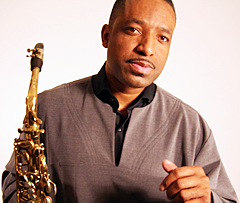 Donald’s approach gives “So What” a swagger. He’s not an old head trying to play like a young head. No indeed. Donald’s got the nod down pat. I would have never thought of modal jazz played like this.
“So What” originally extended the harmonic language of contemporary jazz. Most attempts to play it in a new way end up destroying the shape of the song. Rather than dummying down, Donald’s actually extends the original language by employing a different rhythmic emphasis. So he’s not simply playing old licks over a backbeat.
And to prove that he really knows what he’s doing in updating classics from a half century ago, listen to how Donald arranges Monk’s “Well You Needn’t.” It’s one of the most exciting and original arrangements I’ve yet to hear of Thelonious composition. Again it’s the Archer/Lamkin duo anchoring the rhythm on Monk’s song as well as on the New Orleans classic “Iko.”
Every major development in jazz has included major contributions from a drummer heralding the new direction and these tracks are no different. What the drummer is doing is a key to feeling the flow and energy of the music. What I find delightful is that the live trio tracks with Ron Carter and Billy Cobham have a different emphasis. They sound like what would now be considered classic, straight ahead jazz.
Two references specifically stand out: the Sonny Rollins’ 1957 Live At The Village Vanguard recordings featuring Wilbur Ware on bass and Elvin Jones on drums, and Joe Henderson’s 1985 State Of The Tenor – Live At The Village Vanguard recordings featuring Ron Carter and Al Foster. If you listen to Donald’s predecessors you can easily hear the references. I would add two others to the list, not for specific recordings but in a more general sense.
Ornette Coleman is an old master (how odd it is to talk about Ornette’s playing as old school when he was the longest running new thing out there outside of Sun Ra and Cecil Taylor), anyway Coleman’s discursive approach to improvisation is mirrored by Donald’s story telling sensibility. I think Donald shares Ornette’s outlook toward structure without sharing Ornette’s particular sound. The other reference is Kenny Garrett, not so much for his trio work, even though that is relevant to this discussion, but the real deal is Garrett’s gutsy approach to playing the blues, an approach that Donald shares in spades. Listen to “Blues For Happy People.” That could have been a Kenny Garrett tune except it’s Donald all the way, blowing the blues away!
I’m sure there are other references, but if you check out the Sonny live trio, the Joe Henderson State Of The Tenor stuff, some early Ornette, and especially Kenny Garrett’s 1995 Triology recording, you’ll be all set to fully appreciate Donald Harrison magnificent contribution to sax-bass-drum trio recordings.
Freestyle and Heroes are a pair of albums. For reasons I'm not privy to, each album has a couple of tracks from the other album—it's probably a marketing decision. Freestyle is mainly with the Archer/Lamkin backup unit and Heroes is mainly with the Carter/Cobham backup. I think I prefer Freestyle to Heroes but both come in a distant second compared to the vibrancy of New York Cool: Live At The Blue Note. For all of those who think jazz is sick and dying of old age, Donald Harrison is just what the doctored ordered to pep you up and help inspire the youth to be interested in jazz.
Donald’s approach gives “So What” a swagger. He’s not an old head trying to play like a young head. No indeed. Donald’s got the nod down pat. I would have never thought of modal jazz played like this.
“So What” originally extended the harmonic language of contemporary jazz. Most attempts to play it in a new way end up destroying the shape of the song. Rather than dummying down, Donald’s actually extends the original language by employing a different rhythmic emphasis. So he’s not simply playing old licks over a backbeat.
And to prove that he really knows what he’s doing in updating classics from a half century ago, listen to how Donald arranges Monk’s “Well You Needn’t.” It’s one of the most exciting and original arrangements I’ve yet to hear of Thelonious composition. Again it’s the Archer/Lamkin duo anchoring the rhythm on Monk’s song as well as on the New Orleans classic “Iko.”
Every major development in jazz has included major contributions from a drummer heralding the new direction and these tracks are no different. What the drummer is doing is a key to feeling the flow and energy of the music. What I find delightful is that the live trio tracks with Ron Carter and Billy Cobham have a different emphasis. They sound like what would now be considered classic, straight ahead jazz.
Two references specifically stand out: the Sonny Rollins’ 1957 Live At The Village Vanguard recordings featuring Wilbur Ware on bass and Elvin Jones on drums, and Joe Henderson’s 1985 State Of The Tenor – Live At The Village Vanguard recordings featuring Ron Carter and Al Foster. If you listen to Donald’s predecessors you can easily hear the references. I would add two others to the list, not for specific recordings but in a more general sense.
Ornette Coleman is an old master (how odd it is to talk about Ornette’s playing as old school when he was the longest running new thing out there outside of Sun Ra and Cecil Taylor), anyway Coleman’s discursive approach to improvisation is mirrored by Donald’s story telling sensibility. I think Donald shares Ornette’s outlook toward structure without sharing Ornette’s particular sound. The other reference is Kenny Garrett, not so much for his trio work, even though that is relevant to this discussion, but the real deal is Garrett’s gutsy approach to playing the blues, an approach that Donald shares in spades. Listen to “Blues For Happy People.” That could have been a Kenny Garrett tune except it’s Donald all the way, blowing the blues away!
I’m sure there are other references, but if you check out the Sonny live trio, the Joe Henderson State Of The Tenor stuff, some early Ornette, and especially Kenny Garrett’s 1995 Triology recording, you’ll be all set to fully appreciate Donald Harrison magnificent contribution to sax-bass-drum trio recordings.
Freestyle and Heroes are a pair of albums. For reasons I'm not privy to, each album has a couple of tracks from the other album—it's probably a marketing decision. Freestyle is mainly with the Archer/Lamkin backup unit and Heroes is mainly with the Carter/Cobham backup. I think I prefer Freestyle to Heroes but both come in a distant second compared to the vibrancy of New York Cool: Live At The Blue Note. For all of those who think jazz is sick and dying of old age, Donald Harrison is just what the doctored ordered to pep you up and help inspire the youth to be interested in jazz.
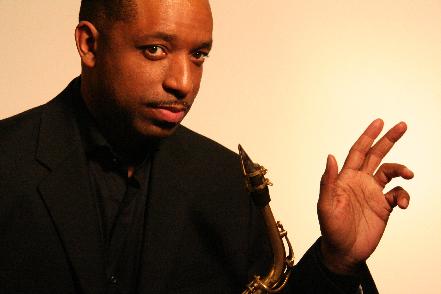 Born in New Orleans June 23, 1960, Harrison has paid his dues and is making a major contribution both by digging new jewels out of old mines accompanied by his elders (Carter/Cobham) as well as by leading the charge of a new generation (Archer/Lamkin) who bring an entirely different sensibility to the music. Donald Harrison Jr., although he’s not a household name, as his playing and his recent sheaf of modern jazz recordings make clear, everyone who has any interest in the future of jazz should get to know the work of Donald Harrison Jr.
—Kalamu ya Salaam
Donald Harrison Jr. Mixtape Playlist
Born in New Orleans June 23, 1960, Harrison has paid his dues and is making a major contribution both by digging new jewels out of old mines accompanied by his elders (Carter/Cobham) as well as by leading the charge of a new generation (Archer/Lamkin) who bring an entirely different sensibility to the music. Donald Harrison Jr., although he’s not a household name, as his playing and his recent sheaf of modern jazz recordings make clear, everyone who has any interest in the future of jazz should get to know the work of Donald Harrison Jr.
—Kalamu ya Salaam
Donald Harrison Jr. Mixtape Playlist
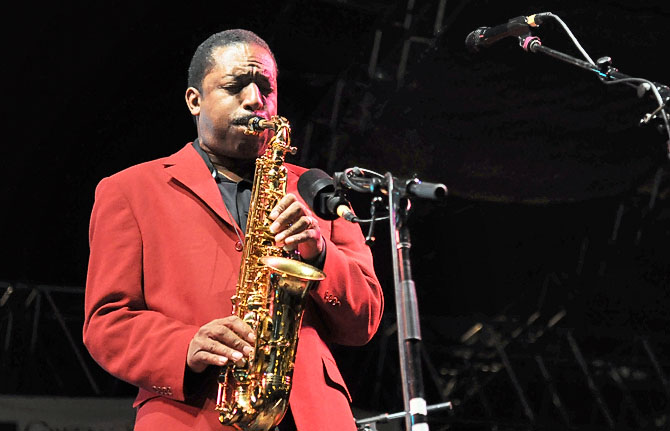 There is much, much more music by Donald Harrison produced both before and after these recordings but these three albums focus on the sax-bass-drums format which is the format under consideration in this feature.
Harrison is also a music educator and has been responsible for inspiring and teaching a whole generation of young jazz musicians in New Orleans and in New York—he has a home in both cities. His most well known protégés are New Orleans trumpeter Christian Scott (who is also his nephew) and internationally lauded rapper Christopher Williams, bka The Notorious B.I.G.
When the whole of Harrison’s life work is complete, it will be obvious that he was one of the major forces in the continuance and development of jazz transitioning from the 20th century into the new millennium.
There is much, much more music by Donald Harrison produced both before and after these recordings but these three albums focus on the sax-bass-drums format which is the format under consideration in this feature.
Harrison is also a music educator and has been responsible for inspiring and teaching a whole generation of young jazz musicians in New Orleans and in New York—he has a home in both cities. His most well known protégés are New Orleans trumpeter Christian Scott (who is also his nephew) and internationally lauded rapper Christopher Williams, bka The Notorious B.I.G.
When the whole of Harrison’s life work is complete, it will be obvious that he was one of the major forces in the continuance and development of jazz transitioning from the 20th century into the new millennium.
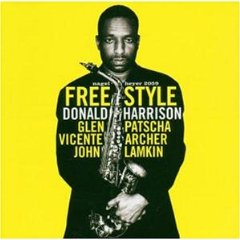 01 “So What” - Free Style
02 “Free Style” - Free Style
01 “So What” - Free Style
02 “Free Style” - Free Style
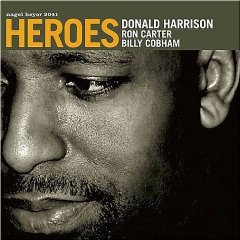 03 “Iko Iko” - Heroes
04 “Well You Needn't” - Heroes
03 “Iko Iko” - Heroes
04 “Well You Needn't” - Heroes
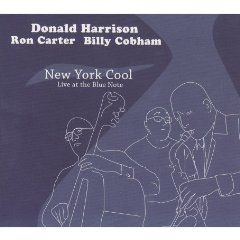 05 “Body and Soul” - New York Cool: Live at the Blue Note
06 “Easy Living” - New York Cool: Live at the Blue Note
07 “I'll Remember April” - New York Cool: Live at the Blue Note
08 “Star Eyes” - New York Cool: Live at the Blue Note
09 “Blues for Happy People” - New York Cool: Live at the Blue Note
05 “Body and Soul” - New York Cool: Live at the Blue Note
06 “Easy Living” - New York Cool: Live at the Blue Note
07 “I'll Remember April” - New York Cool: Live at the Blue Note
08 “Star Eyes” - New York Cool: Live at the Blue Note
09 “Blues for Happy People” - New York Cool: Live at the Blue Note
This entry was posted on Monday, August 10th, 2009 at 5:34 am and is filed under Contemporary. You can follow any responses to this entry through the RSS 2.0 feed. You can leave a response, or trackback from your own site.
Leave a Reply
| top |